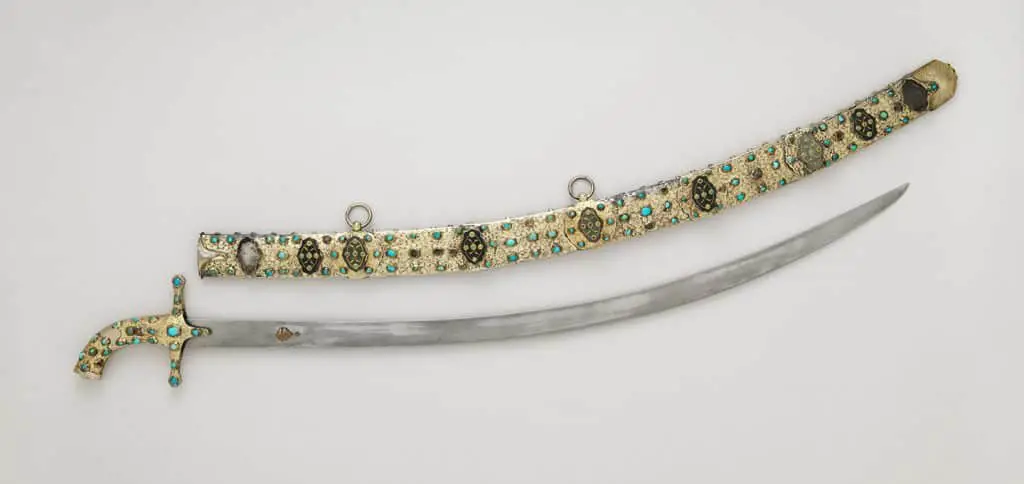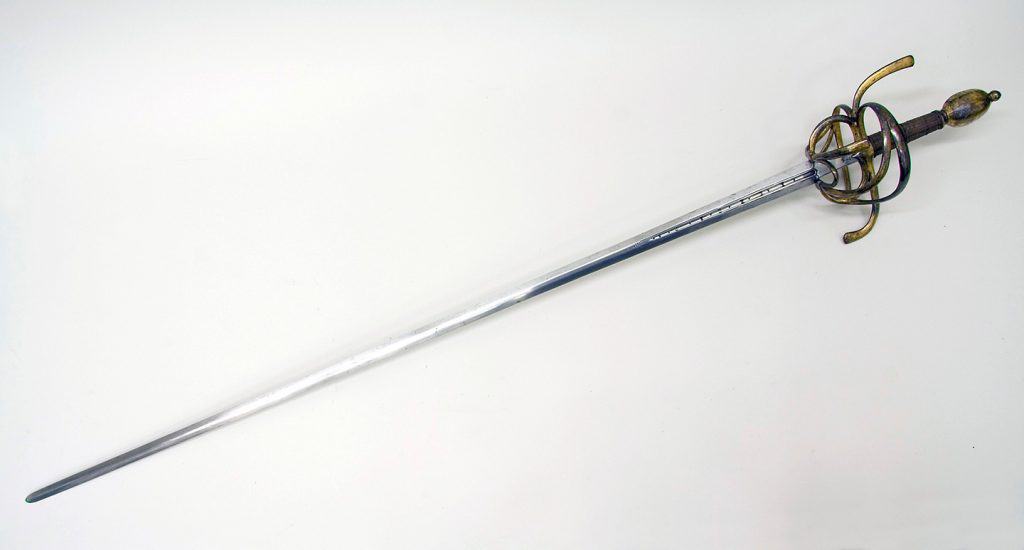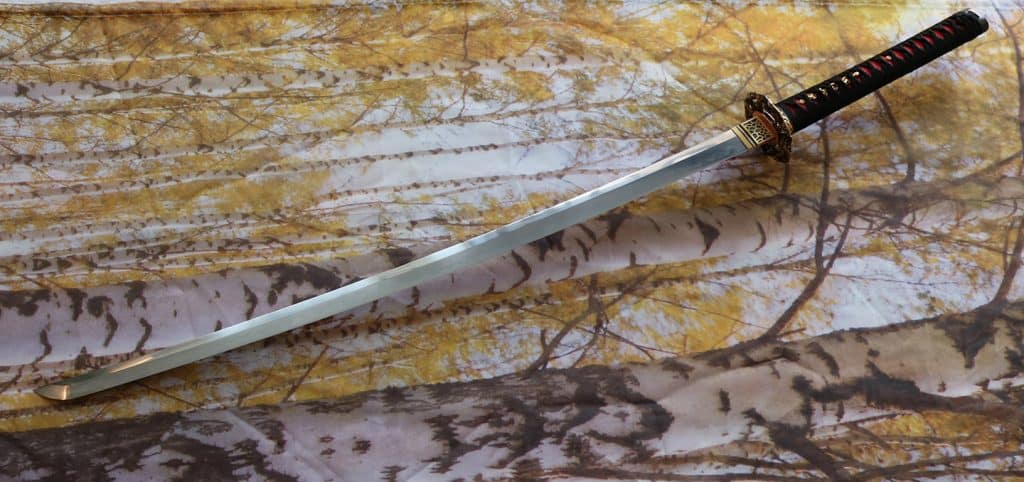
One of the most overlooked aspects of swords certainly is the point of balance. Even when buying a new sword most people don’t care about its point of balance.
That’s a pity! All swordsman agree that the point of balance (PoB) of a sword or katana is really important.
When I purchased my first few swords and katanas I also never regarded their point of balance.
However, with time comes experience. Now I know that I could have made better decisions if I knew about the point of balance earlier.
Table of Contents
What is the point of balance?
The point of balance, short PoB, is the point on a sword where there is an equal weight distribution on both sides. Generally this point is located 5 to 18 cm (2 to 7.1 in) in front of the guard.
Locating the point of balance on your sword isn’t that tricky. You just have to balance the side of the blade on your finger.
There is only one point where both sides are equally weighted. Some people also refer to it as the centre of mass.
However, make sure not to drop your sword on the floor during this process (I am speaking from experience). So don’t be clumsy and pay attention while finding the point of balance of your sword.
People who regularly use a lot of different blades are able to find the point of balance only by performing a few cuts and stances. They literally “feel” the point of balance.
To sum this up you can either find the point of balance consciously or instinctively. Both are completely valid ways of finding the point of balance.
Does the point of balance have an impact on swords and katanas?
I kind of already mentioned it in the introduction. The point of balance certainly has a great impact on the performance of your blade.
But where should the point of balance be? The answer to this question really depends on the purpose of your weapon.
Let’s say you have a rapier. They are primarily used for thrusting. The point of balance on a rapier is located closer to the guard. I always refer to them as guard-heavy swords.
But what if you have a katana. The primary purpose of a katana is cutting. Therefore, the point of balance is further away from the guard. Hence, the katana is a blade-heavy weapon.
There is no perfect point of balance which applies to all swords. For this reason, I will cover the main advantages and disadvantages of a guard-heavy and a blade-heavy sword.
Why use a guard-heavy sword?

Guard-heavy swords are mainly used for thrusting. My favourite example is the rapier.
Ask yourself the question “What aspects are of importance to me when wielding a rapier”.
For me, the most important part when wielding a rapier is being able to make quick, agile, nimble and accurate movements. I want to have precise control of the tip of the blade.
For this reason, a guard-heavy sword is the perfect choice. It allows me to have complete control over the point. On a rapier the point of balance is around 5 cm (2 in) in front of the handle.
By putting the point of balance even close to the guard these effects can be increased. However, it also comes with great disadvantages.
The part from the guard to the PoB is the optimal area for parring. When blocking a sword with the top part of your rapier you will stand no chance.
Your opponent will push back your sword with ease. However, the closer the distance to the point of balance the better you can hold against strikes.
This is the main reason why even on a rapier the point of balance isn’t in the handle but rather 5 cm (2 in) in front of it.
Why use a blade-heavy sword?

Blade-heavy swords are commonly used for cutting. The katana is a prominent example for this.
The point of balance on a katana is around 10 cm (4 in) in front of the tsuka.
In contrast to a rapier you emphasize more force and cutting power. Whereas blade-heavy swords aren’t as agile, rapiers have no cutting power at all!
Getting slashed with a rapier will probably only leave you with a slight bruise. A katana, on the other hand, will kill you.
Since the point of balance on a katana is located closer to the point (kissaki) it helps build up way more force. Therefore, the strikes are stronger and cut deeper.
Furthermore, the strong part of the blade (forte) is larger. However, all these benefits come at a price.
The further away the point of balance is from the guard the heavier the sword feels. As a consequence, you will tire much quicker.
Moreover, your strikes will not be as quick with a blade-heavy sword.
To finish this off I want to give you two more examples of blade-heavy swords.
One of them are cavalry swords. These curved blades often times have their point of balance located around 20 cm (7.9 in) away from the guard. That is quite a lot!
For the regular foot soldier, this is way too much to be practical. At most, the point of balance for them is 17 to 18 cm (6.7 to 7.1 in). However, these numbers aren’t common at all.
Another noteworthy mention is the axe. Their point of balance is at the very top of the blade. After all, they are used for cutting and chopping down trees.
Conclusion
Summing up, it can be said that the point of balance certainly plays a big role in how your sword “feels”. The point of balance is located 5 to 18 cm (2 to 7.1 in) in front of the guard.
Thrusting weapons like the rapier have a point of balance closer to the handle. Whereas on a cutting weapon like the katana the point of balance is further away from the guard.